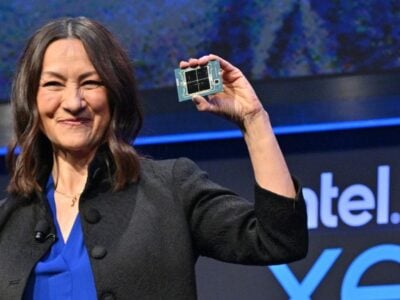
“Future automotive applications need incredibly more computing power”
Q: eeNews Europe: How far has Autosar reached maturity, what is the current status?
Simon Fürst: Today, the Autosar environment is standard for vehicles currently under development. In two to three years Autosar-equipped vehicles will hit the streets in large quantities. This was our first major goal, and we have reached it.
Q: eeNews Europe: Currently, release 4.1 is the most recent version. Will the releases 3.x – which are still in widespread use – now be phased out?
Fürst: The Autosar release life cycle policy always provides for two major releases that will be maintained concurrently. This has been agreed upon in 2012 by all Autosar Core Partners. Currently, these two releases are 3.2 and 4.1. The latter will be further developed, while 3.2 is being supported, and bug fixes are provided. According to this scheme, release 3.2 will be phased out as soon as the development for release 5.0 will start. But currently there are no plans to do so.

Simon Fürst, Autosar Deputy speaker and General Manager for Software Architecture and Platform Software at BMW: "Autosar provides an infrastructure that supports very many standards"
Q: eeNews Europe: The feedback we receive from developers suggests that Autosar is a moving target – a rather confusing situation.
Fürst: This confusion has already been settled through our release life cycle policy. But Autosar is a software infrastructure, and infrastructures always have to take into account that the user requirements are subject to evolution. The same holds true for the hardware that runs the Autosar software. Both are developing continuously.
If you don’t go forward you go backwards. In particular the hardware available to automotive electronics developers is evolving at rapid pace; today, multicore processors with very much higher computing power than ever before are available. In the future, the OEMs will integrate multiple controller functions onto one platform which is more cost effective.
There are currently two major trends in automotive electronics: One is the electrification of the power train, driven amongst others by legal requirements to reduce CO2 emission. The second one is highly automated driving. Both are demanding an incredible increase in computing power.

Complex or simple? The Autosar environment is not easy to understand – but still much simpler than the host of heterogeneous praprietary approaches encountered in many cars.
Q: eeNews Europe: How does Autosar reflect the current development in the area of connected cars? These developments certainly affect the cyber security aspect of the software infrastructure?
Fürst: Autosar already reflects the demand for security by providing the Crypto Security Manager (CSM), an integral part of the system. Currently, the encryption is done in software. Developments are going on to implement these functions in hardware which would improve the security since e.g. the private keys can be stored in a way that no access from outside is possible. And, of course, a hardware solution will achieve better performance. This will enable us to encrypt all on-board data communications across CAN, FlexRay and Ethernet bus systems. Today, the messages carry a signature but they are not encrypted. The encryption will massively restrict the access to internal data buses and ECUs. This is today one of the big topics for OEMs and tier ones.
Q: eeNews Europe: How is the relationship between Autosar and Genivi – are there common topics and points of contact?
Fürst: We have no plans to expand our activities to the infotainment segment – this is the field of Genivi. But we want to implement interfaces to enable communication between the two worlds. There is a working group in place which will design these interfaces. Similar efforts are going on at the methodology level.
Genivi utilizes the Franca IDL (Interface Description Language), a methodology that describes communications relations. We are busy to blend these interface techniques with ours in order to facilitate software migration.
Q: eeNews Europe: Is the TCP/IP communications stack now an integral part of the Autosar standard?
Fürst: Yes, it is already implemented in version 4.1.1. The entire communications stack is specified according to Autosar which means that it can be configured according to the Autosar methodology. It is now ready for series production. The benefit of Ethernet is that it is a very mature technology. On one hand, this communication stack requires more hardware resources than, for example, CAN communications. This holds true for computing power and in particular for RAM. On the other hand we gain a high-performance data network technology that meets the requirements of future applications.
Q: eeNews Europe: Is the emerging car-to-x technology something that affects Autosar?
Fürst: Car-to-x is driven by other committees and groups. But as soon as the interfaces will be standardized, Autosar will create the infrastructural prerequisites to support car-to-x applications. This is our general mission: To provide an infrastructure that supports very many standards.
 If you enjoyed this article, you will like the following ones: don't miss them by subscribing to :
eeNews on Google News
If you enjoyed this article, you will like the following ones: don't miss them by subscribing to :
eeNews on Google News




